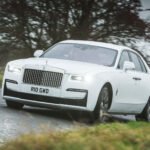How Warning Alerts Impact Driving Behavior
Some warning alerts can lead to more hazardous driving
University of Texas at Austin
In recent years, every new car driver has been getting used to bells and beeps. As automakers try to make cars safer, they’ve introduced increasingly sophisticated driving assistance systems, to warn a driver when they’re drifting out of their lane or someone’s in their blind spot.
But do these features actually improve safety? Proponents point to studies showing that blind spot and lane departure warnings lead to decreases in collisions. Skeptics contend the systems can make drivers less attentive, relying too much on warning signals.
New research from Ashish Agarwal, associate professor of information, risk, and operations management at Texas McCombs, finds evidence for both viewpoints. By considering how human beings react to different kinds of warning signals, he suggests, automakers could better reduce risky driving behaviors.
“Our objective here is to give feedback to the car companies,” Agarwal says. “When they’re designing these features, they have to be aware that in some cases, they may make behaviors worse.”
Agarwal worked with Cenying Yang of the City University of Hong Kong and Prabhudev Konana of the University of Maryland to analyze data from a large automaker for cars sold in 2018 and 2019. The data, collected from onboard sensors, included trips, speeds, and acceleration rates for 195,743 vehicles. Some had Advanced Driving Assistance Systems (ADAS), and some did not.
The team’s main question was: Do these systems affect the general driving behavior of users over time, and, if so, how?
Affecting Driving in Opposite Ways
They gauged two kinds of hazardous driving behavior: rates of hard braking and rates of speeding. They also zeroed in on two sets of ADAS features that demand driver responses: blind spot detection and lane departure/forward collision warnings.
“We compared cars with blind spot detection with the ones that don’t have that to see how it influences speeding and hard braking behavior,” Agarwal says.
Controlling for variables such as vehicle features and driver demographics, the team found the two kinds of warning signals had opposite effects on driving behavior.
- Blind spot detection reduced the daily number of hard braking events 6.76% and speeding events 9.34%, compared with cars without ADAS.
- By contrast, lane departure/forward collision warnings led to 5.65% more hard braking and 5.34% more speeding.
Time magnified both effects, the researchers found, as drivers grew accustomed to the systems.
- Drivers speeded 0.40% less often for each extra month they used blind spot detection.
- They speeded 0.32% more for every added month with lane departure warnings.
Two Kinds of Thinking
Why do different features prompt different behaviors? In line with a psychological concept called dual process theory, Agarwal believes they trigger two different modes of thinking.
Urgent warnings, such as lane departure and forward collision, require a driver to correct course immediately. That causes System 1 or reactive thinking, which is automatic and largely unconscious. Says Agarwal, “It triggers risk compensation behavior, which impedes your learning and makes your behavior worse.”
By comparison, blind spot detection does not demand an instant reaction. It allows time for deliberate, System 2 thinking, reasoning one’s way to a response.
Automakers should consider these findings as they design the next generation of ADAS features, Agarwal says. For example, a car could repeat a warning signal after a lane departure as well as during. That might encourage System 2 thinking, helping a driver reconsider their risky behavior.
“For learning to take place, you need to be in the System 2 mode,” he says. “That means that you learn, and your behavior improves over time.”







